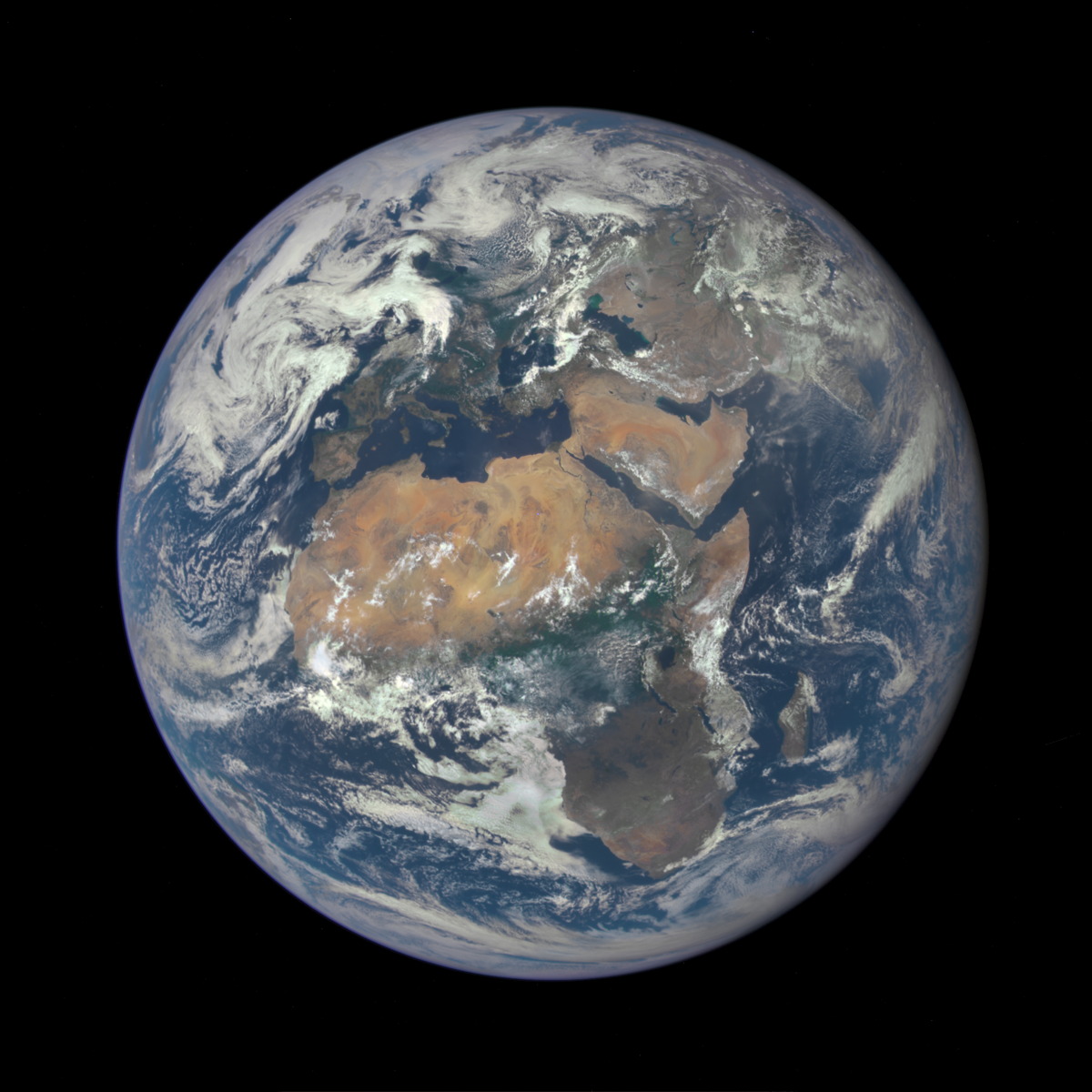Amazing Africa: Continent Spied from Space in Gorgeous NASA Pic

A NASA satellite that stares nonstop at the sunlit side of Earth has captured this captivating, crystal-clear view of Africa as the continent appears from space.
The photo was captured by a camera on the Deep Space Climate Observatory (DSCOVR), which watches the Earth from a distance of 1 million miles (1.6 million kilometers) at a gravitationally balanced point between the Earth and sun.
This vivid new view of Earth is built from three photos taken by DSCOVR's EPIC camera on July 6, minutes apart, focusing on the red, green and blue channels of the camera's sensors. The EPIC camera (its name is short for Earth Polychromatic Imaging Camera) is aimed toward Earth to photograph the sunlit surface of the planet over a variety of different wavelengths, including visible light, infrared and ultraviolet wavelengths
The new image shows the Sahara desert to the south and the Nile River flowing to the Mediterranean Sea, NASA officials said in an image description. DSCOVR's stunning view of Africa comes on the heels of another gorgeous photo of Earth from space captured by the satellite, which NASA released last week. That image shows the opposite side of Earth, as it appeared to DSCOVR.
DSCOVR's EPIC images will be used to measure attributes such as the ozone and aerosol levels in the atmosphere, as well as cloud height and vegetation.
The DSCOVR mission is a joint project between NASA, the National Oceanic and Atmospheric Administration, and the U.S. Air Force. The mission's primary goal is to monitor the solar wind from the gravitationally balanced Lagrange point 1, known as L1. Ideally, the satellite can give a 15 to 60 minute warning of solar storms from the sun, as they pass the satellite on the way to Earth.
The DSCOVR satellite launched into space earlier this year, on Feb. 11. It began its life as an Earth science satellite called Triana in 1998, but that project was canceled in 2001 due to cost overruns and political debate. NASA and NOAA resurrected the mission, which included the already complete (but mothballed) satellite, in 2009 to serve as a space-weather sentry.
Get the Space.com Newsletter
Breaking space news, the latest updates on rocket launches, skywatching events and more!
Email Sarah Lewin at slewin@space.com or follow her @SarahExplains. Follow us @Spacedotcom, Facebook and Google+. Original article on Space.com
Join our Space Forums to keep talking space on the latest missions, night sky and more! And if you have a news tip, correction or comment, let us know at: community@space.com.

Sarah Lewin started writing for Space.com in June of 2015 as a Staff Writer and became Associate Editor in 2019 . Her work has been featured by Scientific American, IEEE Spectrum, Quanta Magazine, Wired, The Scientist, Science Friday and WGBH's Inside NOVA. Sarah has an MA from NYU's Science, Health and Environmental Reporting Program and an AB in mathematics from Brown University. When not writing, reading or thinking about space, Sarah enjoys musical theatre and mathematical papercraft. She is currently Assistant News Editor at Scientific American. You can follow her on Twitter @SarahExplains.









